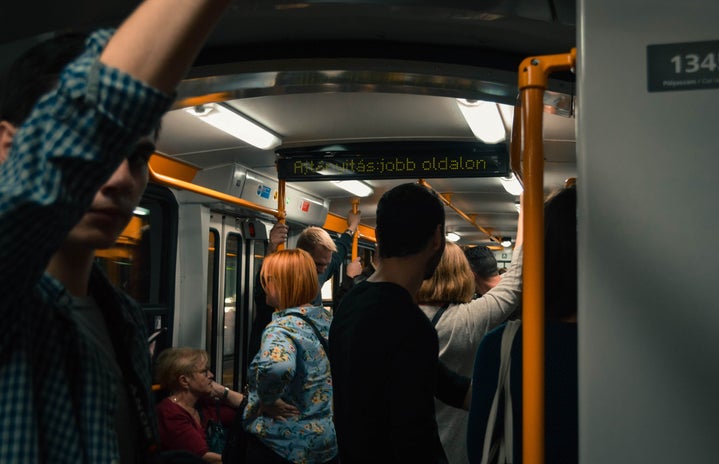Michigan State University has a huge campus in a major city. While public transit in the U.S. is generally lacking, Lansing is lucky to have some options in the form of a decently robust bus system. This includes nine on-campus bus routes that are all free to students and faculty. These routes go between dorms and on-campus apartments. While all of them are useful, some are more practical than others. Rating each one allows students to make their best judgments and reveals some lesser-known on-campus options.
30 – 7/10
The 30 route goes from East to South Neighborhood. It goes around to each dorm in East and goes to each dorm in South, following mostly a straight line down Shaw. It stops at other dorms like McDonel and Owen and some academic buildings like Wells Hall, the International Center, and Anthony Hall.
It runs roughly every 10 minutes and stops around 2 a.m. It is also one of the only routes not impacted by the Farm Lane construction. This, its frequency, and the late run time raise the score. However, its lack of access to North campus and its often congested nature – due to the volume of students in East Neighborhood – prevent it from being perfect.
31 – 9/10
The 31 is the other bus route that accesses East Neighborhood, going to Brody Neighborhood instead. It only has one stop in East and goes to Brody via Grand River, making it easy to access both the area and much of Lansing’s bus system. This also stops at the Snyder-Phillips area and has a stop right outside of West Circle, making it one of the most comprehensive routes on the list.
It runs every seven minutes but can be closer to every ten due to construction delays. This can enhance already-present congestion problems, both inside the buses and with traffic. It is another late-night bus route. Being accessible from many neighborhoods and a wide range, this would be a perfect score. The only aspects barring this are construction and the fact that it only goes one way. This can make it difficult to go to a close stop without having to take the whole route around.
32 – 6/10
The 32 is designed for commuter students who want to park their cars in Lot 89. This lot is a bit far south of most of campus, so a bus route is efficient. In the past, it has gone in a nearly straight line from the parking lot to the CATA transit center, and finally to Snyder-Phillips. However, Farm Lane construction has severely limited the route, with only the first half being present.
The stop at CATA is helpful for students to transfer onto other buses. This route runs every 15 minutes and stops at 7 p.m. These aspects would be more of an issue if the main demographic was not commuter students, but many may be off-campus before 7 p.m. anyway. The main hurdle with this route now is the construction, but it may improve in the future.
33 – 7/10
The 33 runs from North to South neighborhood using W. Circle Drive, Shaw Lane, and Wilson Road. It stops at the Union, the Library, and the Music Building on West Circle. It also stops at the International Center, Communication Arts and Science, and Biomedical and Physical Sciences, among other dorms. West Circle only has one stop and Snyder Phillips is not included anymore during the construction.
CATA only ever provides shorter buses with the 33, heightening congestion at times. It runs every ten minutes but is often late because of the construction. The 33 also stops running at 10 p.m. While there are alternatives to traveling between the two neighborhoods that run later, the 33 stopping is inconvenient and decreases its score.
The Weekend Buses – 4/10
The weekend buses are a unique breed. They combine the 30 and 31, plus the routes that go to off-campus apartments. The 34 most closely mimics the 31, the 35 goes to South Neighborhood and the off-campus apartments and the 36 goes to East Neighborhood. The main issue is that only one or two buses go through each route on a loop. This makes for a bad frequency of every 30 minutes during the day and every hour at night.
These routes still run late and stop on Grand River, which is very practical during the weekends. They can often be unreliable as well since not many students ride them. While there are many issues, riders should appreciate that buses run during the weekend at all, so they are not a net negative.
38 – 7/10
The 38 is a shorter route that goes from Shaw Lane near the bus station to Spartan Village, a complex of on-campus apartments. It stops at various points on Trowbridge Road and at Vet Med. The route is intended to connect students to other routes at the station rather than to transport students all around campus. It runs pretty infrequently every half hour and ends at 10:30 p.m. It is lacking on its own but a decent solution when paired with the rest of the on-campus network.
39 – 8/10
This is the final free on-campus bus route and is another short one serving University Village. It also goes from the CATA Transit Center to the apartment complex. It notably follows Red Cedar Road and stops at Wells Hall, a large academic building. This gives it some practical edge over the 38 even when it serves a very similar purpose. It also runs more frequently, every 15 minutes and stops around 2 a.m. It is overall an improvement over the other on-campus bus routes.
In conclusion, MSU’s free bus system is a useful resource for students. The wonderful bus drivers are not the ones causing issues: It is instead construction and planning that is out of their control. They are not the ones to aim complaints at. While it has its problems, the buses are near and dear to students’ hearts. Higher ridership often means more frequent routes and additions, so one of the best ways to address the issues is to keep riding and let CATA know which routes to improve. Happy travels!


